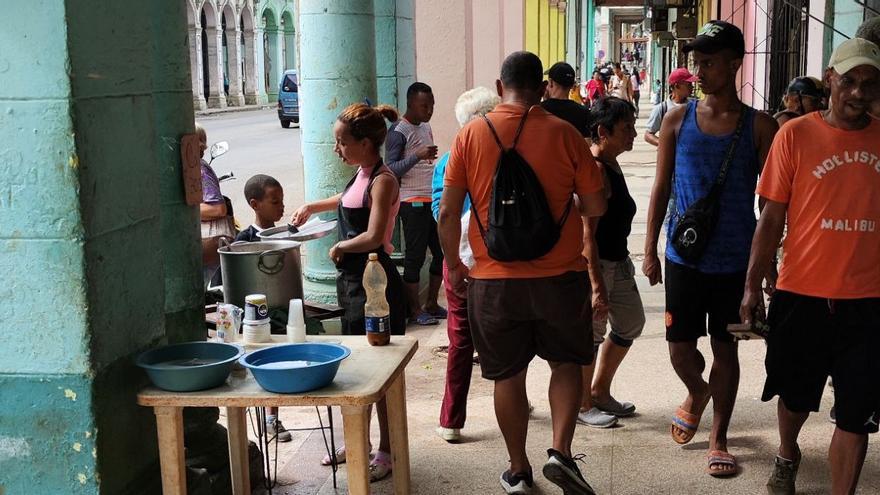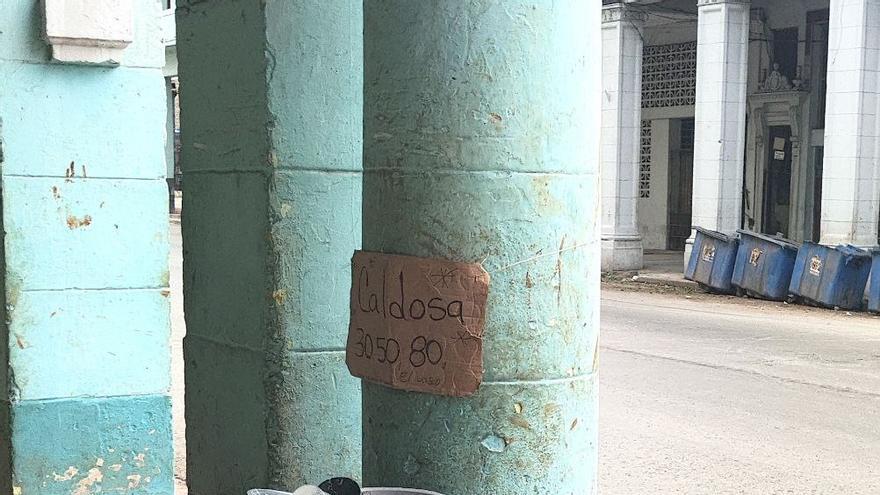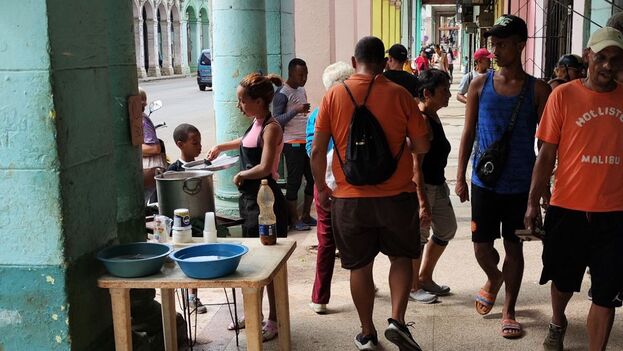
14ymedio, Juan Diego Rodríguez, Havana, January 12, 2024 — The woman quickened her pace until she reached the corner of Reina and Manrique streets, in Centro Habana. In front of a table with flimsy legs with a pot on top, she ordered “a broth for 30 pesos.” The vendor served her a pale liquid in which small pieces of something floated. The lady drank everything in one long drink and crossed the street, avoiding the puddle of sewage water right in front of the improvised food service point.
The ethnologist and jurist Fernando Ortiz defined Cuban culture as an ajiaco — a rich chicken stew made with three types of potatoes — because it mixed African, Spanish and indigenous, plus countless customs of those who migrated to the Island from different latitudes. Dense and made from rich meats and vegetables, this Creole dish could “raise a dead man,” as described by the elders, but its preparation is very difficult today, with its ingredients missing from the market platforms or extremely expensive.



